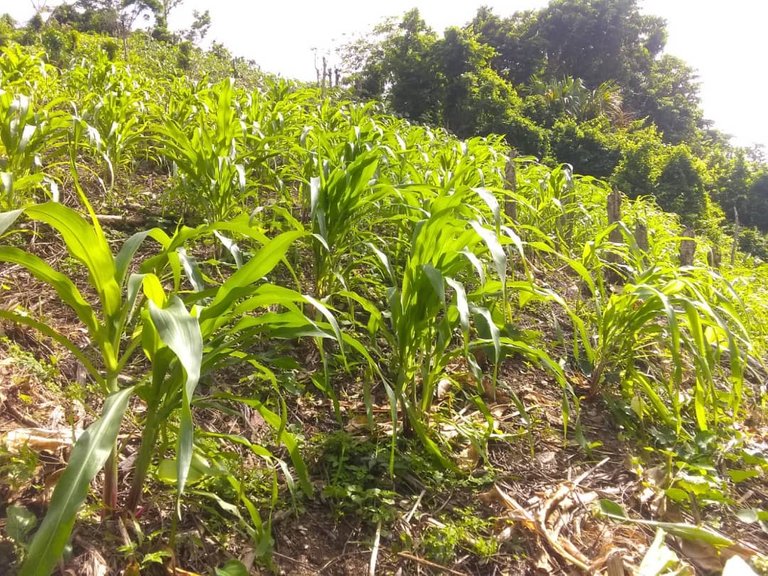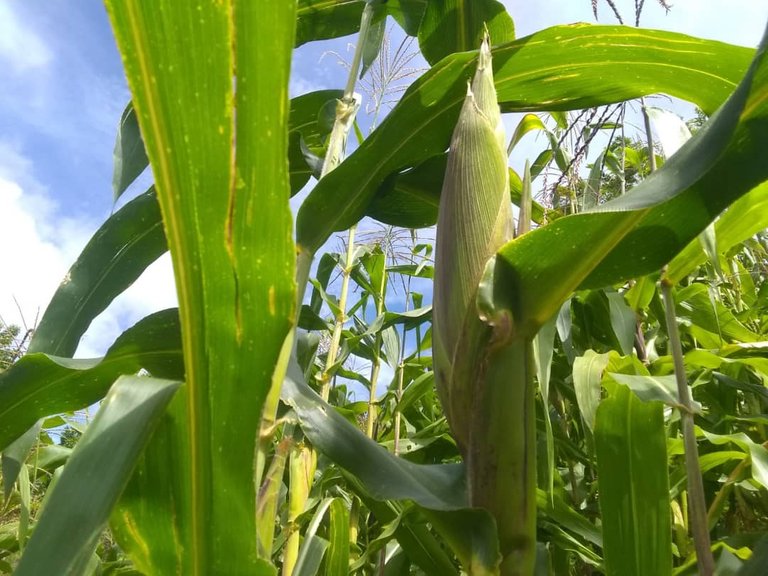Hello friends. I am not used to sharing a post every day, this is due to time and work issues, and whenever I do it is to share something of my daily life that somehow could be useful to you. In this case I will tell you about Corn Production, which is a job I have been doing for 6 years.
Producir maíz para el sostenimiento en casa y no para comercialización a gran escala es algo muy común en la localidad donde vivo (Sucre - Venezuela), y lo mejor de todo esto es que contamos con tierras muy fértiles que nos permiten cosechar buenas mazorcas.
Producing corn for home sustenance and not for large-scale commercialization is something very common in the town where I live (Sucre - Venezuela), and the best thing about this is that we have very fertile land that allows us to harvest good cobs.

La cosecha de maíz es una de las más aprovechada porque es de rápido desarrollo (3 meses), y puede ser consumido de distintas formas: la mazorca tierna es utilizada para hacer cachapas, se puede comer sancochada, azada y también se puede dejar secar para utilizarse para la elaboración de harina o someterse a un procedimiento de pilado para facilitar el uso del grano previamente sancochado para la elaboración de "arepas" , etc.
The maize harvest is one of the most used because it is of fast development (3 months), and can be consumed in different ways: the tender cob is used to make cachapa, it can be eaten parboiled, hoed and can also be left to dry to be used for the production of flour or undergo a process of piling to facilitate the use of the previously parboiled grain for the preparation of "arepas", etc..
Además su siembra no requiere de gran experiencia..
Lo primero que debemos hacer es escoger un terreno que consideremos fértil, cortar toda la maleza, hasta dejarlo al descubierto del sol.
The first thing to do is to choose a piece of land that we consider fertile, cut all the weeds, until it is exposed to the sun.
Luego escogemos una semilla (maíz) de buen tamaño. Y vamos sembrando con distancias de 1m entre cada hoyo aproximadamente.
Then we choose a seed (corn) of good size. And we go sowing with distances of approximately 1m between each husk.
En cada surco que hagamos con una pequeña coa, debemos introducir 5 o 6 granos hasta cubrir todo el terreno que hayamos dispuesto.
In each furrow that we make with a small coa, we must introduce 5 or 6 grains until we cover all the land that we have arranged.

Debemos tener en cuenta que el maíz se siembra en tiempos de lluvia.
We must take into account that corn is planted in rainy seasons.
Las semillas en 5 días ya habrán germinado al punto de ver los tallos brotando sobre la tierra.
The seeds will have germinated in 5 days to the point where you can see the stems sprouting above ground.
Pasado el primer mes debe dar la primera limpia al conuco, para ese tiempo ya habrá alcanzado casi 1m de altura. Si se requiere se le dará una segunda limpia, todo depende del tipo de maleza. A partir del 2do mes ya el maíz comentará a brotar las espigas y automáticamente la mazorca empezará a formarse.
After the first month, the conuco should be cleaned for the first time, by which time it will have reached almost 1m in height. If required, a second cleaning will be given, it all depends on the type of weeds. After the second month the corn will begin to sprout ears and automatically the ear will begin to form.

Cuando la mazorca esté bien formada y gruesa, quedará a nuestro criterio de cuando poder cosechar dependiendo del destino que le daremos al maíz.
When the cob is well formed and thick, it will be up to us to decide when to harvest depending on the destination of the corn.
Los invito a hacer sus conucos de maíz.... Saludos.
I invite you to make your corn conucos .... Greetings.
@joseluishernandz
Felicidades por tu conuco, que tengas una muy buena cosecha 🤗